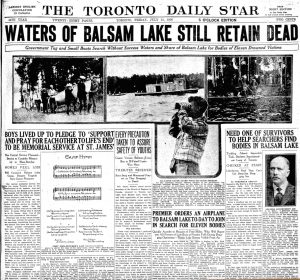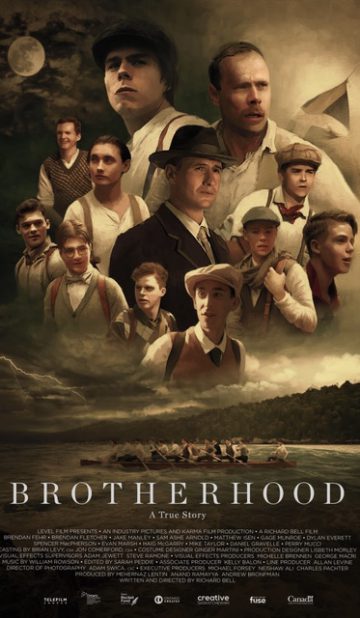The Reel Review
A 1926 camping adventure at Canada’s Balsam Lake turns into a harrowing fight for survival, after a large war canoe carrying 13 teenage boys and their two chaperones capsizes overnight in a freak summer squall. This historical drama is based on the deadly, nearly 100-year-old real-life tragedy, which made global headlines after it claimed the lives of 11 of the 15 individuals from drowning and hypothermia.

Told through a series of flashbacks and set to a sweeping orchestral score and beautiful, sepia-toned period production design, writer/director Richard Bell sets out to create an epic, symbolic narrative about building character through adversity – weaving tragedies from World War One and the 1918 global flu pandemic into his story, as well as a look at the random occurrences that can lead to an individual’s life or death. Imagine Brotherhood as a spin on 1989’s Dead Poets Society, just set to a real-life tragedy.

Where Bell excels is in poetically capturing the essence of the period and incorporating heartfelt backstories of some of the boys, many of whom had lost their fathers in WWI. Where he falls a bit short is in his screenplay, which too often veers into overwrought, cliched melodrama. And most odd is his choice to film half of the story, the actual canoe capsizing, in near total darkness. Being barely able to make out what is happening serves only to frustrate viewers, nearly sinking his beautiful, well-meaning tale.
REEL FACTS
• During an interview after the 1926 tragedy, the father of the two Wigington brothers, only one of whom survived, visited the lake and described seeing the fresh paint on the canoe which bore the fingernail scratches where the boys had dug in during that fateful night.

• Arthur Lambden, the camp director who survived the tragedy, died in 1989 at the age of 92. Shortly after the 1926 tragedy he described to The Toronto Daily Star how each of the boys “dropped off one by one as their strength failed them. They went to their death without a whimper and to the last unselfishly trying to help the other fellow.”
• A war canoe, first used by Canada’s indigenous people hundreds of years ago, holds 15 people – 14 paddlers and a coxswain for steering. Not sanctioned by the International Canoe Federation, war canoe racing is largely a Canadian sport, although some teams come from the northwestern United States.



